The Murder and Mystery Built Into the Lush, Luxurious Sets of TNT's I Am the Night
If you think the title of TNT’s new limited series I Am the Night is disquieting, just wait until you see the locations for the noir drama inspired by the life of Fauna Hodel and her connection to the infamous Black Dahlia murder. In 1965, Fauna (India Eisley) travels from Sparks, Nevada, to Los Angeles determined to learn the truth about the family that gave her up as a baby. Her search for answers dovetails with the redemptive journey of Jay Singletary (Chris Pine), a tabloid reporter facing his own demons, which include addiction, PTSD, and the implosion of his career as a credible journalist after a case he helped build against Dr. George Hodel (Jefferson Mays), a prominent L.A. gynecologist of questionable morals (to say the least), collapsed years earlier. Neither of them yet know the depth of darkness in Hodel, who was a suspect in the unsolved 1947 murder of aspiring actress Elizabeth Short, better known as the Black Dahlia.
The project reunites Pine and Connie Nielsen (who portrays Hodel's secret-keeping ex, Corinna Hodel) with their Wonder Woman director Patty Jenkins. She helms the first two episodes of the six-part series, and production designer Julie Berghoff, an Emmy winner for Hulu’s The Handmaid’s Tale, remembers, in an early conversation, discussing how the energy of the series would shift with the changing of the various locations in which the cast of characters find themselves. For instance, as innocent, small-town girl Fauna walks up the intimidating steps of the infamous Sowden House expecting to meet her grandfather, she and the audience alike get a sense that something sinister lies within.
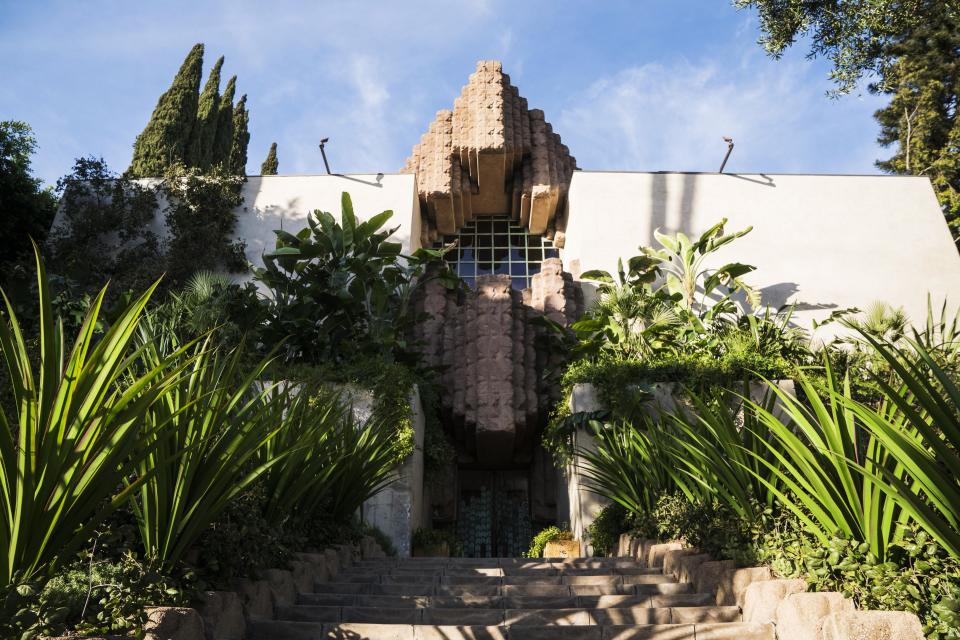
Designed in 1926, by Lloyd Wright (Frank’s son), the eerie Los Feliz landmark really was once the home of George Hodel, who purchased it in the '40s. “The [current] homeowners had actually pulled out all of the greens two months before we got there, so we had to re-create the whole overgrown jungle look that the house had, which was so gorgeous and framed the whole entrance,” Berghoff says. “The nickname of the house is the Jaws house, but for me it felt like a Mayan tomb.”
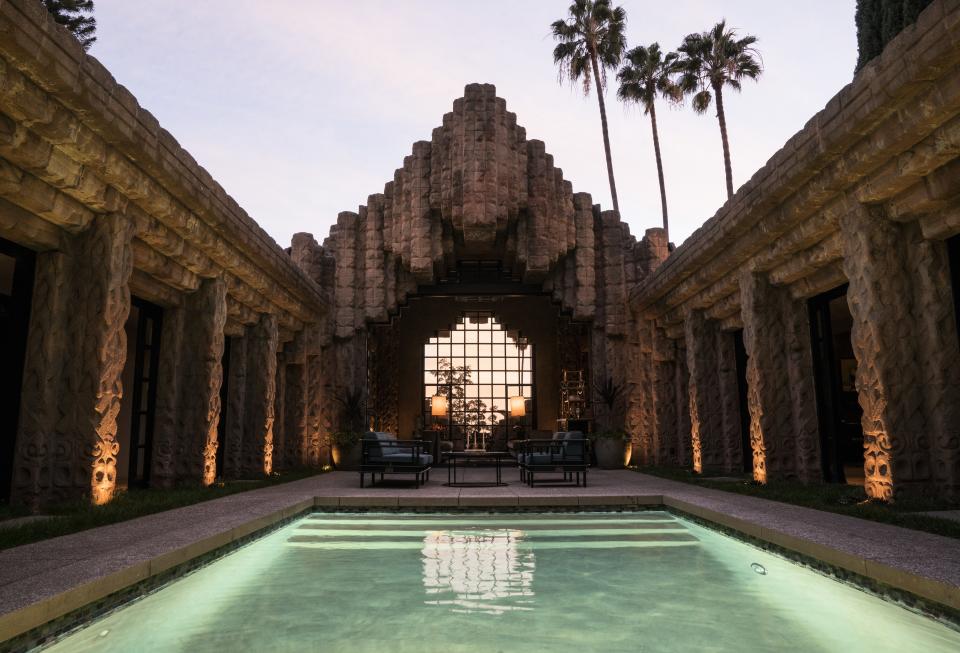

That concrete-block Mayan influence is visible throughout, from the showstopping open courtyard at the center of the home—which wouldn’t have included the pool in Hodel’s day (Berghoff chose not to cover it for scenes depicting his famous parties, but she did hide the Jacuzzi)—to the cavelike living room, which Berghoff’s set decorator, Sophie Neudorfer, opted to dress with Art Deco couches as opposed to something more befitting Hodel’s midcentury taste. “You know when you sink into a couch that just envelops you?” Berghoff says. “A lot of the scenes that took place there were very ominous and haunting, so we wanted the furniture to help us take that to the next level.”

Location manager Jeff Hunter refers to the Sowden House as a “work of art,” but socialite Corinna’s home may be Berghoff and art director Brett McKenzie’s real masterpiece. Hunter was having a hard time finding the perfect undisturbed 1920s Spanish-style home where Fauna would continue her search into her past, until he remembered a house he used to pass every day when he lived in Sierra Madre. Built in 1925 by architect Sylvanus Marston—best known for his firm’s work throughout Pasadena, including the USC Pacific Asia Museum—the home was a challenge not only for its address (“If L.A. could ever have a Mayberry kind of town, that would be it,” Hunter says) but also because it required a clean sweep. A moving company spent two or three days removing everything, including the accommodating owner’s huge art collection, before the Night crew painted walls for a week and re-dressed the home with artwork, furniture, and exotic finds to represent theatrical Corinna.

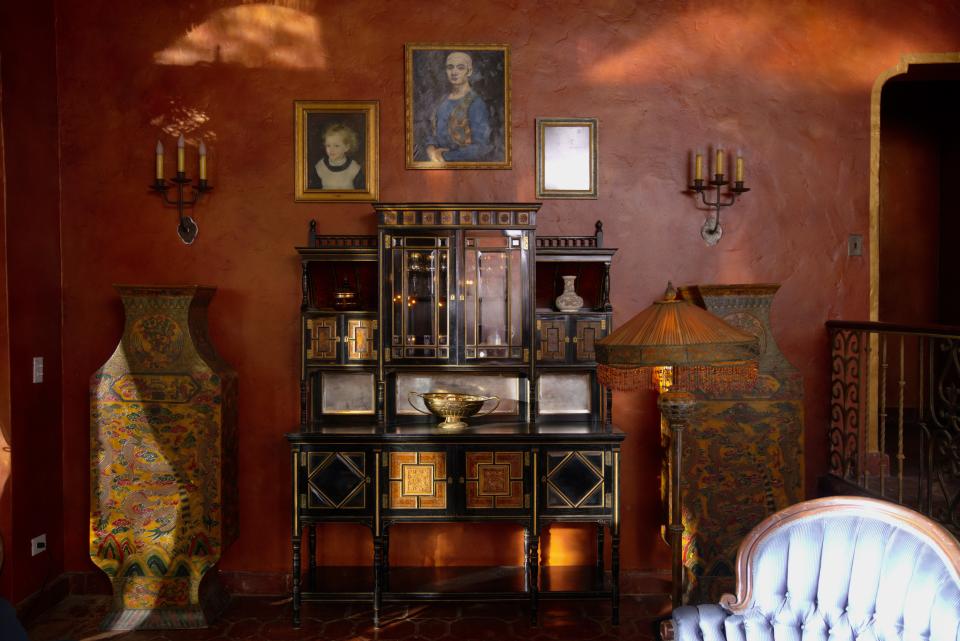
“Patty and I talked about her color palette having a romantic feel, so I did a Tuscan-like scenic paint job in the entire house,” Berghoff says. “It started off really warm and deep, with burgundies and golds downstairs. The set dressing was really feminine, with velvet and a chaise lounge and a white peacock. Corinna had her treasures from traveling the world. And then you went upstairs to more of a softer color palette in the bedrooms that also allowed a lot of shadows for the whole hide-and-seek with Fauna when she’s trying to find out more about who she is.”
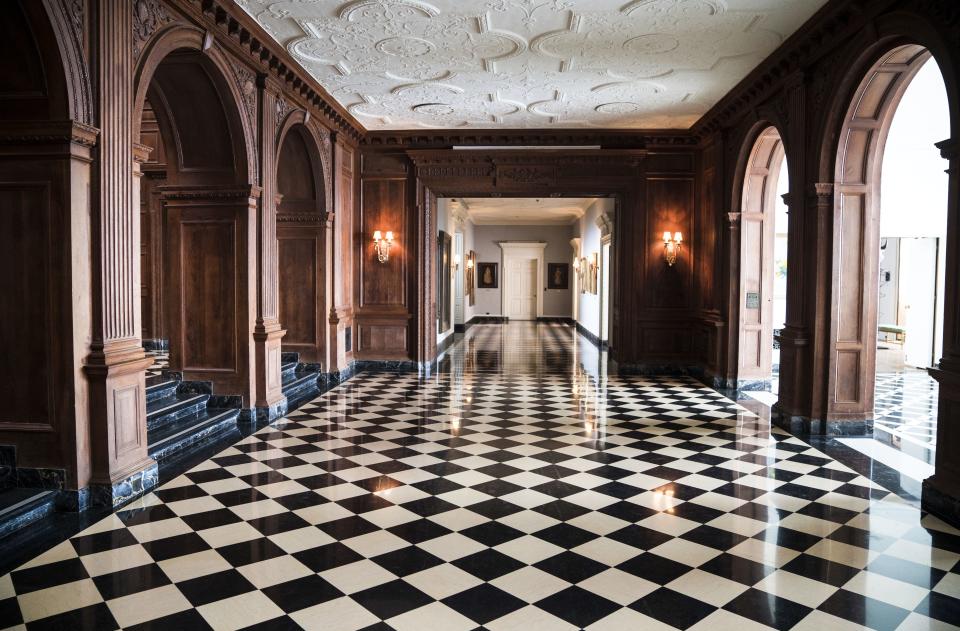
Another cat-and-mouse game plays out in Beverly Hills’s Greystone Mansion, which Berghoff converted into a museum that houses everything from Surrealist works of art to French Henry V furniture and wardrobe. Jenkins was the one who suggested using the Gordon Kaufmann–designed Tudor-style estate for key scenes; it was home to the American Film Institute when she was an AFI student.
“I loved the graphicness of the tile floor,” Berghoff says of the popular filming location, “and because of the different levels and the different rooms with different doors, there was the ability to really have that feeling where Fauna was being watched. That space lent itself to supporting the whole idea of the script, of people watching her and her feeling uneasy.”

Berghoff scoured her own personal library, Google, and “a million other resources” to study and then visually design the many homes of the '60s, and those still stuck in the '50s, that show up in the series. But even when it came to locations that required limited scene time, she was no less committed to every little detail. To recreate the L.A. Times, where Jay goes to see an editor (their preferred meeting spot is a dimly lit bar, shot at the American Legion’s Hollywood Post 43), Berghoff went straight to the source to research how its offices would’ve been organized back then. To represent the open bullpen, the show set up shop in the lobby of one of her favorite structures in the city, the Department of Water and Power’s John Ferraro Building. Designed by AC Martin and Associates and completed in 1965, its striking spiral staircase makes it another sought-after location.
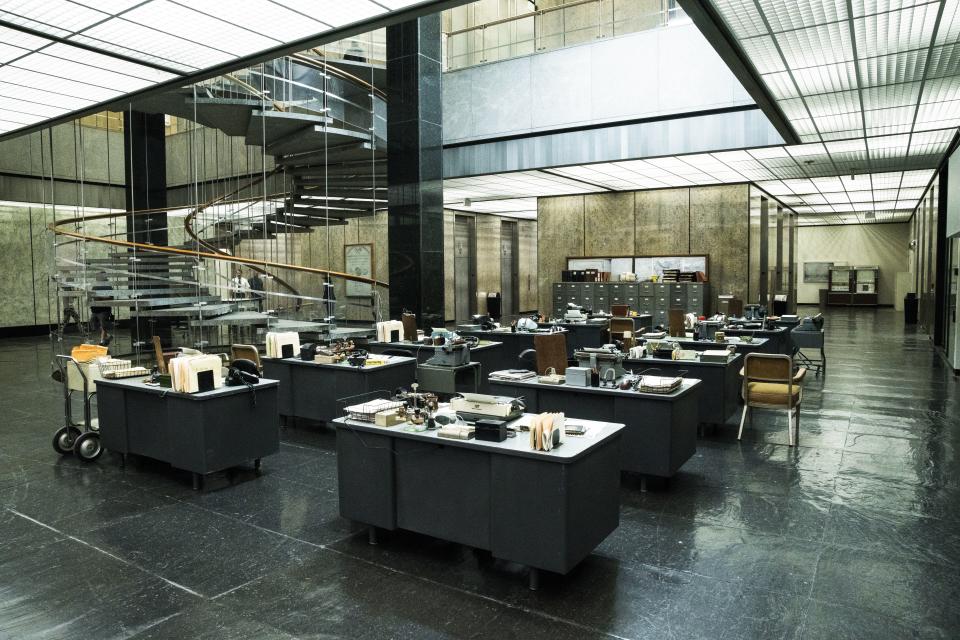
“We separated the artists on the right-hand side, then all the writers up the middle, and then, of course, the executives in their small offices in the back,” Berghoff says. “So that was a crazy one-and-a-half-day dress for a scene where Chris Pine walks through it in ten seconds. My poor decorator. She was just like, ‘You picked the hardest location, and he's gonna just walk through that space.’ But that's what we do.”

Related: FOX's Live Broadcast of RENT Brings an Immersive Season of Love to TV

